Italy: An Educational Travel Guide
Facts, travel tips, what to expect when traveling to Italy, and more!
Are you ready to join us as we explore Italy, our 2023 Campus of the Year? From stunning cliffs and sparkling beaches to homemade pasta and world-class shopping, Italy harbors some of the world’s greatest treasures. This enchanting land will capture your senses with epicurean delights and artistic wonders that have become the gold standard across Western Civilization. Since Ancient Rome first stood as the most powerful city in the world, the Italian peninsula has filled the dreams of its residents and visitors alike.
No matter your interests — learning ancient history in Rome, navigating the artistic masterpieces of Vatican City, tasting the flavors of Tuscan cuisine or hiking the villages of Umbria — Italy’s style and charm will capture your imagination and leave you longing for more.
Fun facts, Italy travel tips, what to know when traveling to Italy, best places to visit in Italy and more! This Italy travel guide will tell you everything you need to know before making your trip.

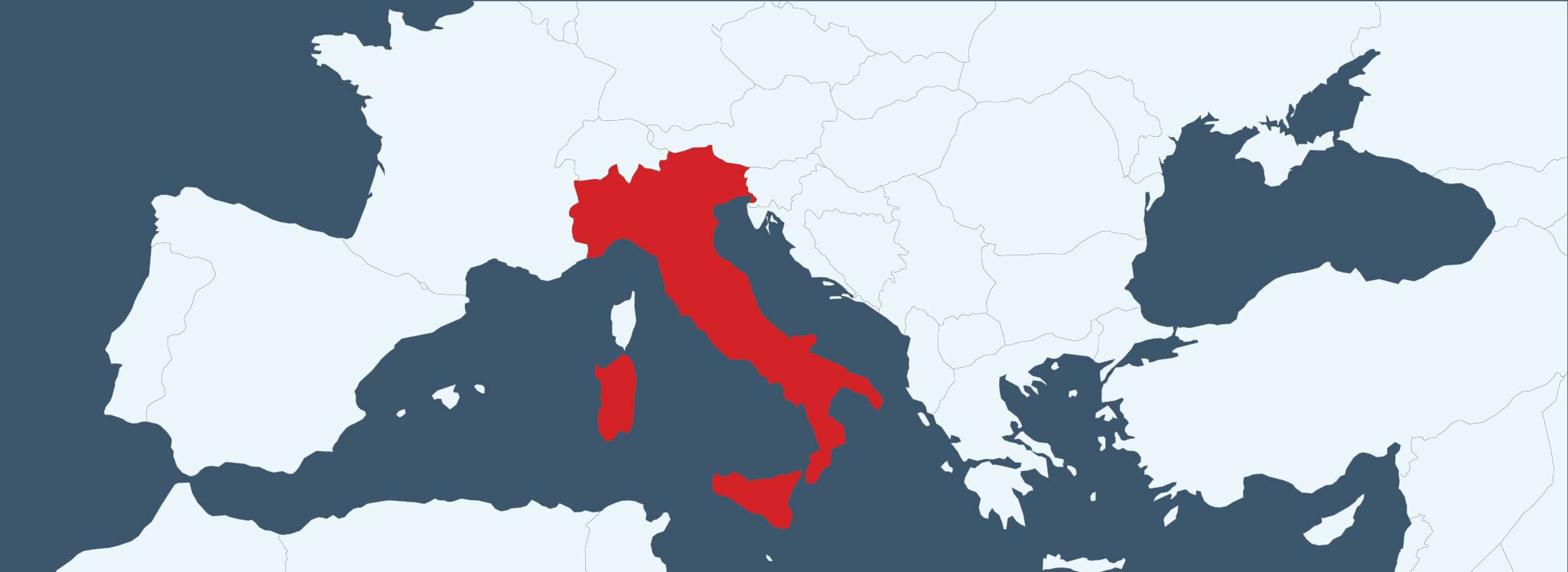
- Official Name: Repubblica Italiana — Italian Republic
- Population: 62,137,802 (23rd in the world)
- Language: Italian
- Capital: Rome
- Currency: Euro
- Time Zone: +1 CET (Central European Time) — Six time zones ahead of Eastern Standard Time
- Total Size: 116,348.02 sq mi (73rd in the world)
- Coastline: 7,722 miles
- Major Cities: Rome, Milan, Naples, Turin
Italy Travel Tips
1. PLAN AHEAD FOR TRAIN TRAVEL
Point-to-point train tickets are a popular form of travel, especially on the popular circuit connecting Milan, Venice, Florence and Rome. Rail offers an affordable and flexible form of transportation, often costing less than $50 per ticket, but requires planning ahead. Many trains require a seat reservation that is not guaranteed by purchasing a ticket. Plus, if you are purchasing an overnight ticket, be sure to specify Mr. or Mrs. — public compartments are separated by male and female.
2. COVER CHARGE
Be sure to read the menu before sitting down for a meal. Some restaurants include a per-person cover charge, il coperto, that is often listed at the very top or the bottom of the menu. The small cover charge of one or two Euros covers things like still tap water and bread for the table that is usually on the house.
3. RESTAURANT TRADITIONS
Experiencing Italy’s culinary traditions is one of the country’s greatest treasures, with no shortage of restaurants to choose from. Italians take great pride in their food and requesting a substitution in your meal is considered an insult to the chef. If you have an allergy, ask the waiter for help to find an alternative dish. Drink the restaurant’s house wine — it’s cheap and delicious — and take your time to enjoy your meal. When you are ready to go, ask your waiter for the check to be delivered.
4. COFFEE RULES
There is proper etiquette when drinking coffee in Italy. Typically enjoyed during the morning, espresso (caffè) is the main form of coffee that locals quickly take at the counter or bar before leaving the shop. American-style drip coffee is hard to come by and it is rare to find Italians carrying to-go cups.
5. CLOTHING MATTERS
Fashion in Italy is important but it is important to dress smart. When visiting, wear shoes that are comfortable for walking on older streets cobblestone streets. Religious sites including St Marks, St Peter’s Basilica and Santa Maria del Fiore (the Duomo) have staff enforcing dress codes requiring covered knees and shoulders.
It is also wise to purchase a body wallet to prevent your passport, money, and other valuables from being stolen by professional pickpockets. Carrying a small crossbody bag, worn to your front, zipped shut and held with one hand, can prevent theft.
6. BE WISE WITH YOUR LUGGAGE
Part of Italy’s charm is its ancient steps, cobbled streets, narrow hotel staircases, and train travel. Don’t be stuck with impractical luggage. The proper bags can make for an easier trip.
7. BE MINDFUL OF MEAL TIMES
There is no such thing as an early bird special in Italy! Dinner in Italy is usually not served in restaurants before 7:30 p.m.
8. AVOID MUSEUMS ON MONDAYS
Many museums in Italy are closed on Mondays so plan to do something else on those days.
9. USE A REUSABLE WATER BOTTLE
Rather than having to purchase plastic bottled water which is expensive and bad for the environment, bring your own reusable water bottle to retrieve fresh potable water from one of the many water fountains around Italy. Clean drinking water from the local mountains is readily available across most regions in Italy.
10. BE PREPARED TO WALK
Italy's quaint piazzas and iconic landmarks are known for their beautiful cobblestones, iconic staircases and historic architecture. While your bus will bring you as close as possible to the locations you want to explore, many of these extremely old locations only allow vehicles to get so close — meaning you will need to walk the rest of the way. If you experience mobility issues, you may benefit from using a mobile cane chair to allow you to steady yourself as you walk over cobblestones, or offer you a seat when you need to rest. We recommend wearing comfortable, sturdy shoes as you may encounter stairways without railings and other somewhat challening pathways to navigate.
Getting Around Italy
If you’re wondering how to travel throughout Italy, don’t fret; Italy has options for everyone with international and domestic airfare, trains and ferries. When flying from North America, travelers are likely to arrive at one of Italy’s two major international airports: Rome Leonardo da Vinci-Fiumicino Airport and Milan Malpensa. Frequent international and domestic connections provide easy access to the remainder of the country, operating popular flights to Venice, Florence, Naples and Catania.
Italy is home to a vast, interconnected rail network. Eurail offers international connections from neighboring countries, and domestic high-speed rail connects much of the country. Frecciarossas — Italy’s fastest trains capable of reaching speeds of 250 miles per hour — connects Turin in the foot of the Alps to Salerno and the Amalfi Coast, making daily connections including Milan, Bologna, Florence, Rome and Naples. Slower, regional networks connect the country and offer premier views of the scenic landscapes.
With more than 5,000 miles of coastline and dozens of islands, a popular way to reach Italy is by boat. Mediterranean cruises commonly visit larger ports including Livorno (Florence), Civitavecchia (Rome), Naples, Taormina and Venice and offer opportunities to visit cities located farther inland. Smaller ships and yachts can call at ports dotting Italy’s extensive coastline. Italy offers a number of ferries connecting coastal towns, island chains and neighboring countries. Ferry routes connect major ports in Sicily and Sardinia to cities on the mainland including Genoa, Livorno, Rome and Naples. Ferries can also be taken across the Adriatic Sea, connecting eastern Italy to Croatia, Montenegro, Albania and Greece.
No matter which part of Italy you explore, walking will be an integral part of your experience. Bring along comfortable, sturdy shoes to navigate the many cobblestones and rail-less stairways you may encounter. While your bus will bring you as close as possible to the landmarks you have dreamed of exploring, many of these locations prohibit vehicles from getting too close and you will need to walk the remainder of the way. Pro tip: if you have mobility issues, bring along a mobile cane chair to help you navigate uneven pathways and offer you a place to sit and rest when needed.
Italy Travel Requirements
Like any country you plan on exploring, there are certain travel requirements to keep in mind. When it comes to Italy travel requirements, there are several key considerations to be aware of, including:
- Passport and visa: One of the top tips for first-time travelers and travel tips for Italy is to always check the destination’s passport and visa requirements. For Italy, you must ensure your passport is valid for at least six months beyond your planned departure date, and depending on your nationality, you may need a visa to enter Italy for tourism, business, or any other purpose.
- Customs regulations: Another essential tip for traveling to Italy is to check the most updated list of customs regulations and what you can and can’t bring into the country, such as certain foods, plants, and other goods.
- Driving requirements: An Italy travel guide isn’t complete without discussing driving requirements. Tourists looking to explore the country by car might be required to obtain an international driving permit, depending on whether their current license is issued by an EU/EEA country. It’s also important to familiarize yourself with local Italian traffic laws and regulations.
These are some of the top Italy travel tips to keep in mind to ensure a smooth adventure. Other Italy travel requirements include health insurance and travel insurance to ensure you have coverage for any unexpected medical or travel events.
Do You Need a Travel Visa for Italy?
Like many travelers, you may wonder, do you need a travel visa for Italy? U.S. citizens do not need a tourist visa for stays less than 90 days. However, for those looking to stay in Italy for more than 90 days, you will need to obtain a permit of stay. You can find more information about visas on the Department of State website.
Is Italy Safe for Solo Female Travelers?
So, is Italy safe for solo female travelers? Italy can be a great choice if you’re looking for a solo female travel destination. Overall, Italy has a relatively low crime rate, mostly comprised of petty crimes like pickpocketing. However, like any solo female traveler, taking the proper precautions can help ensure a safe visit. Before embarking on a solo adventure, research your destination and look for cities or neighborhoods with high crime rates so you know where to avoid. Additionally, always stay aware of your surroundings and dress moderately to respect local customs, particularly when visiting religious sites. Other important tips for traveling to Italy are keeping your valuables secure using a concealed pouch or money belt and ensuring you inform someone, like a friend or family member, of your itinerary and travel plans.
Is Italy Safe to Travel?
When traveling to Italy, assessing the overall safety is crucial to ensuring a safe and memorable experience. Overall, Italy boasts a moderate crime rate, with nonviolent and petty crimes like theft and economic crimes being the top causes of concern. However, violent crime is rare in Italy, with little to no gun violence. If you’re looking to find an adventure, turn to Road Scholar to explore some of the top travel destinations, including Italy, where you can join a guided tour for a truly immersive experience.
Italy
See AllTop 9 Things to See in Italy
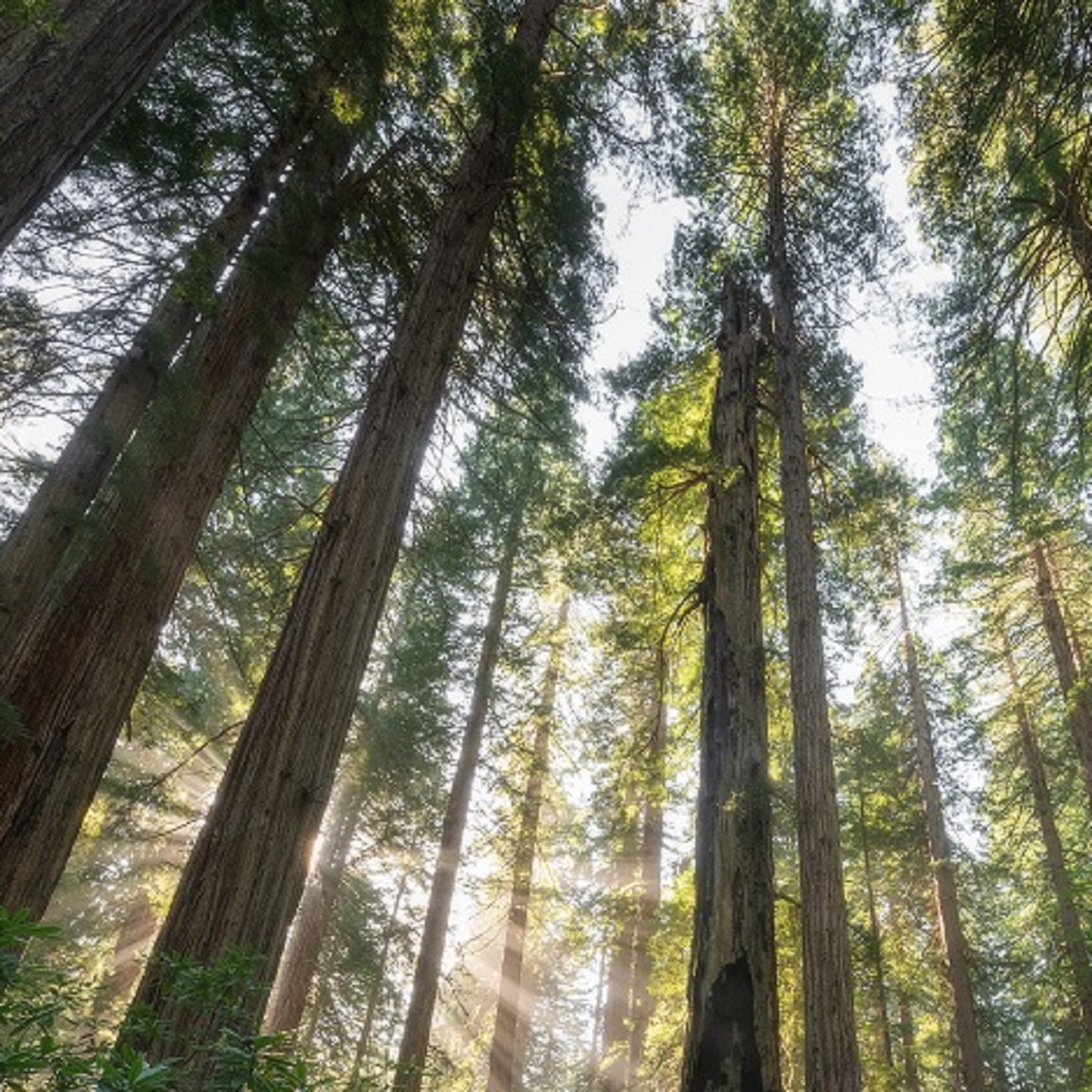
The capital of Italy and the Eternal City, Rome is the amalgamation of 3,000 years of history and a center of cultural and artistic development. Ancient monuments, Renaissance masterpieces and charming piazzas and fountains fascinate and inspire visitors from all walks of life. The winding streets of Rome — some of the oldest in the world — connect antiquity and modern day as historic landmarks and neighborhood trattorias stand side by side. Dominating the skyline on the River Tiber’s west bank, Vatican City and the Saint Peter’s Basilica are home to medieval gardens and some of the greatest works of art ever created.
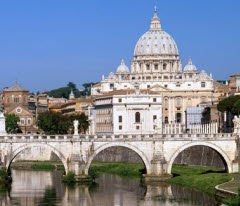
Italy fully encompasses two sovereign nations within its borders — Vatican City and San Marino. Vatican City is the world’s smallest nation by size and population. San Marino was founded in C.E. 301 and its constitution was written in 1600, making it the oldest constitutional republic in the world.
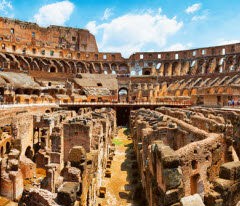
Completed in C.E. 80, the Roman Colosseum is estimated to have held a maximum capacity of 80,000 spectators with attendance averaging 65,000; this is larger than many modern day stadiums including Gillette Stadium, the home of the New England Patriots, with a seating capacity of 65,878.
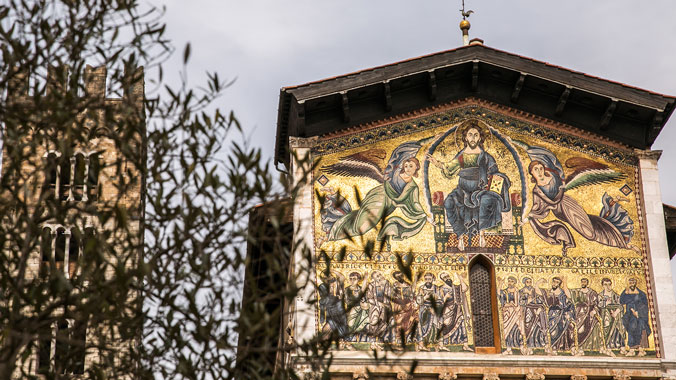
Italy has 53 UNESCO World Heritage Sites — more than any other country in the world. The Rock Drawings in Valcamonica were the first site designated in 1979. Venetian fortifications from the 16th and 17th centuries are the country’s most recent World Heritage Site, designated in 2017.
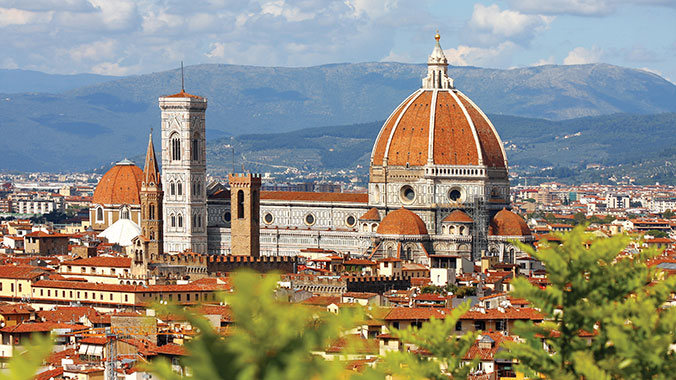
The center of Italian artistry, Florence was the birthplace of the Renaissance and is widely considered one of the most beautiful cities in the world. The marble-paneled Duomo and medieval Palazzo Vecchio tower over the city as art, architecture and history intersect within their walls. Dante, Machiavelli, Galileo, Brunelleschi, Botticelli, da Vinci and the Medici family are but a taste of the legendary Florentines who have made their mark on the world in the realms of science, art, architecture, literature and politics. The surrounding fields and vineyards have contributed to rich culinary traditions, ever-evolving in family-run restaurants and local markets. Drawing its origins from simple foods that could be enjoyed by those living off the land, Florentine cuisine has achieved an international reputation led by olive oil and Tuscan wines.
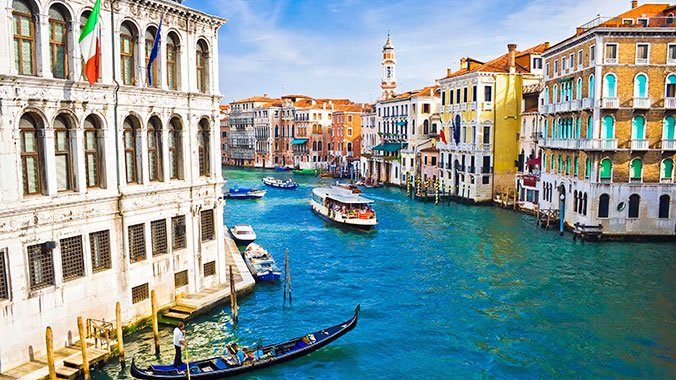
At the height of its power, Venice was the epicenter of a merchant empire that infused the Floating City with a seemingly endless supply of wealth. Renaissance and Gothic palaces rise out of the Venetian Lagoon, situated atop 118 small islands. A city without cars, picturesque bridges crisscross narrow canals lined by gondolas and grand residences with pastel-colored facades. The vast arcade of Piazza San Marco, opulent and gold-plated St. Marks Basilica and the Venetian Gothic-stylings of the Doges Palace form the centerpiece of Venice’s artistic and architectural achievements. One of Europe’s cultural capitals, the city completed Italy’s Renaissance trifecta — alongside Rome and Florence — drawing its influences from vast connections throughout the Arab and Byzantine world.
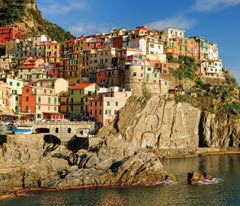
Rising out of the sea on terraced cliffs and buildings seemingly stacked one atop the other, the five fishing villages of Cinque Terre hug the rugged coast of the Italian Riviera. Tucked inside a six-mile stretch of Italy’s spectacular coastline, colorful houses — ranging from soft pastels to deep hues — and hanging gardens are reflected in the turquoise coastline from which these villages have prospered. The winding cliff-side roads have allowed Cinque Terre to retain its authenticity; walking or traveling by boat have been the premier form of transportation between the villages and the outside world for centuries. From east to west, the five villages of Riomaggiore, Manarola, Corniglia, Vernazza and Monterosso each have their own identity, which is best experienced on foot along the National Park’s many walking trails.
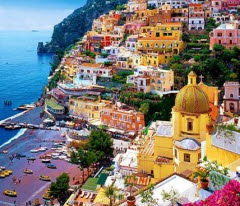
Once a powerful maritime republic, the medieval architecture of the Amalfi Coast ends its name to one of Italy’s most captivating stretch of coastline. As if captured from the heart of the Romantic Movement, the stunning southern stretch of the Sorrentine Peninsula is where turquoise water meets soft-hued villages and tree-lined cliffs. Serene, pebbled beaches and villages protected in time are delicately lined with terraced lemon groves intertwined with steep bluffs, limiting land-based travel to a single highway hugging the winding coast. The coast’s stunning geography lends its hand to maritime travel, where panoramic views are a spectacle to behold, and hiking trails offer a reprieve from the more popular towns. Encompassing the best the Amalfi Coast has to offer, the three towns of Positano, Amalfi and Ravello each have their own enchanting charm.
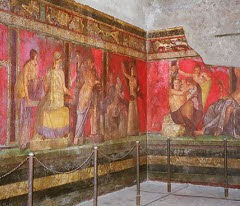
Founded in the 8th century B.C.E. and once controlled by the Etruscans and Greeks, Pompeii grew into a getaway for wealthy Romans and a popular stop for early travelers. The city was a prominent resort town with paved streets lined with shops, taverns, cafes and bathhouses. Mount Vesuvius’ fateful eruption in 79 C.E. sent a plume of ash and rock into the sky, warning Pompeiians that their time was short. Within a few days, Pompeii was buried in volcanic ash — a small percentage of the city’s estimated 20,000 residents along with it. Along with the neighboring towns of Stabiae and Herculaneum, Pompeii remained undiscovered until archaeological excavations in 1748. Excavations have been ongoing for three centuries as scholars and visitors have been captivated by some of the best-surviving examples of Roman life and culture.
Recommended Reading
Find these inspiring books and more in our online bookshelf at Bookshop.org!
“THE HOUSE OF MEDICI, ITS RISE AND FALL”
BY CHRISTOPHER HIBBERT
Nonfiction
A well-written, entertaining history of the Medicis in Renaissance Florence. Great to read before going to Florence, where the influence of the Medicis and the artists they supported is still very much in evidence.
“THE RELUCTANT TUSCAN”
BY PHIL DORAN
Nonfiction
When his wife impulsively buys a dilapidated farmhouse near Lucca, Doran has no choice but to follow her, capturing his hilarious ruminations on the townsfolk and the Italian way of life and descriptions of the breathtaking Tuscany landscapes in this memoir.
“ITALY IN MIND”
BY ALICE POWERS
Nonfiction
A terrific collection of some of the best literary writing on Italy, including pieces by Melville, Lawrence, Henry James, Mary McCarthy and many others.
“SICILY: AN ISLAND AT THE CROSSROADS OF HISTORY”
BY JOHN JULIUS NORWICH
Nonfiction
Ancient Greek settlements, Punic battlegrounds and a royal playground, Sicily has witnessed the rise and fall of powers for thousands of years. In this page-turning narrative, Norwich expertly reveals the often overlooked influence Sicily has had on world history.
“ROME”
BY ROBERT HUGHES
Nonfiction
Defying convention to become Cardinal Rodrigo Borgia's official poisoner, Francesca Giordano becomes the confidante of Lucrezia and the lover of Cesare while pursuing her father's murderer and struggling to prevent Renaissance Italy from resuming oppressive medieval practices.
“PASTA GRANNIES: COMFORT COOKING: TRADITIONAL COOKING FROM ITALY'S BEST HOME COOKS"
BY VICKY BENNISON
Nonfiction
Who better to take inspiration from than Pasta Grannies who have spent their lifetimes plating up comfort and connection? Each recipe is accompanied by a QR code that links you to the YouTube videos of these remarkable womena and their recipes.
"MICHELANGELO AND THE POPE’S CEILING”
BY ROSS KING
Nonfiction
King's colorful chronicle of the world's most famous ceiling paints a maniacal pope, a budding artist and a "who's who" of other 16th-century Italians (Raphael, Machiavelli, and Leonardo da Vinci). Presented with flair and backed by a wealth of research.
“ITALIAN LANGUAGE FOR BEGINNERS: YOUR EASY-TO-FOLLOW AND HASSLE-FREE PRIME GUIDE TO LEARN ITALIAN AND GET YOU READY TO TRAVEL TO ITALY”
BY FLORENCE COLOMBO
Nonfiction
Have you always wanted to learn to speak Italian? This guide is intended to help take you from zero to conversing in Italian at a practical level.
“BEAUTIFUL RUINS”
BY JESS WALTER
Fiction
Hailed by critics and loved by readers of literary and historical fiction, Beautiful Ruins is the story of an almost-love affair that begins on the Italian coast in 1962... and is rekindled in Hollywood fifty years later.
“This was our first Road Scholar adventure and it's hard to imagine a better one! Leaders, accommodations, food, scenery, weather and our fellow travelers all were outstanding. Northern Italy is a wonderful region for bicycling and sightseeing.”
— Charles from Durham, N.H —
Italy's Iconic Geography & Weather
Looking at a map, Italy is impossible to miss with its iconic boot shape and the island of Sicily rising out of the Mediterranean just off the tip of the toe. With more than 7,000 miles of coastline containing the Italian Alps and a mountainous spine bisecting the peninsula, the landscape changes with each bend of the road.

Much of Northern Italy is encased within the Alps to the north and west and the Apennines to the south. These mountain ranges are home to some of Europe’s best-known peaks including the Matterhorn, Monte Rosa, the Dolomites and Mont Blanc. The Alps forms the basin of the Po River, which flows through the vast Venetian Plain to its outlet in the Adriatic Sea and is home to most of Northern Italy’s population. Northern Italy is home to Genoa, Turin, Venice and Milan.
Weather in Northern Italy
Surrounded by the Alps, the Po Valley sees cold, snowy winter and warm summers. Temperatures trend cooler at higher elevations with winter snow and moderate rainfall in the late spring and fall. During the winter, fog rolls off the Po River and low-hanging clouds are trapped by the mountains limited the hours of sunshine. Summers in the Po Valley can be hot and muggy as air descending the Alps is warmed and sweeps away lingering fog and clouds. Alpine lakes have a moderating effect; the shores are slighter warmer and clearer in the winter while thunderstorms often break the summer heat. Venice’s climate is milder than the rest of northern Italy due to its location on the Venetian lagoon.

Central Italy is characterized by the rolling hills and mountains of the Apennines and considered by many to be Italy’s heartland. Much of the land is dominated by the Apennines and coastal swamp that has since been reclaimed. These mountains are home to some of the oldest walled cities in Italy. Natural plains are limited but those that do exist are extremely fertile. Major cities include Rome, Florence, Siena, Pisa and Perugia.
Weather in Central Italy
Divided by the Apennine Mountains, central Italy has a milder climate but often depends on which coast you’re on. Bordering the Adriatic, Italy’s east coast has warmer summers and milder winters. Temperatures rarely fall below freezing and rainfall is sparse but occurs consistently throughout the year. Italy’s west coast along the Tyrrhenian Sea is slightly warmer and wetter than the east coast. Rain is common during the fall when storms come in from the Mediterranean. As the Apennines rise between the east and west coasts, temperatures are cooler than the rest of central Italy from the increased elevation. With peaks reaching upward of 6,500 feet, snow is common during the wet winter months.
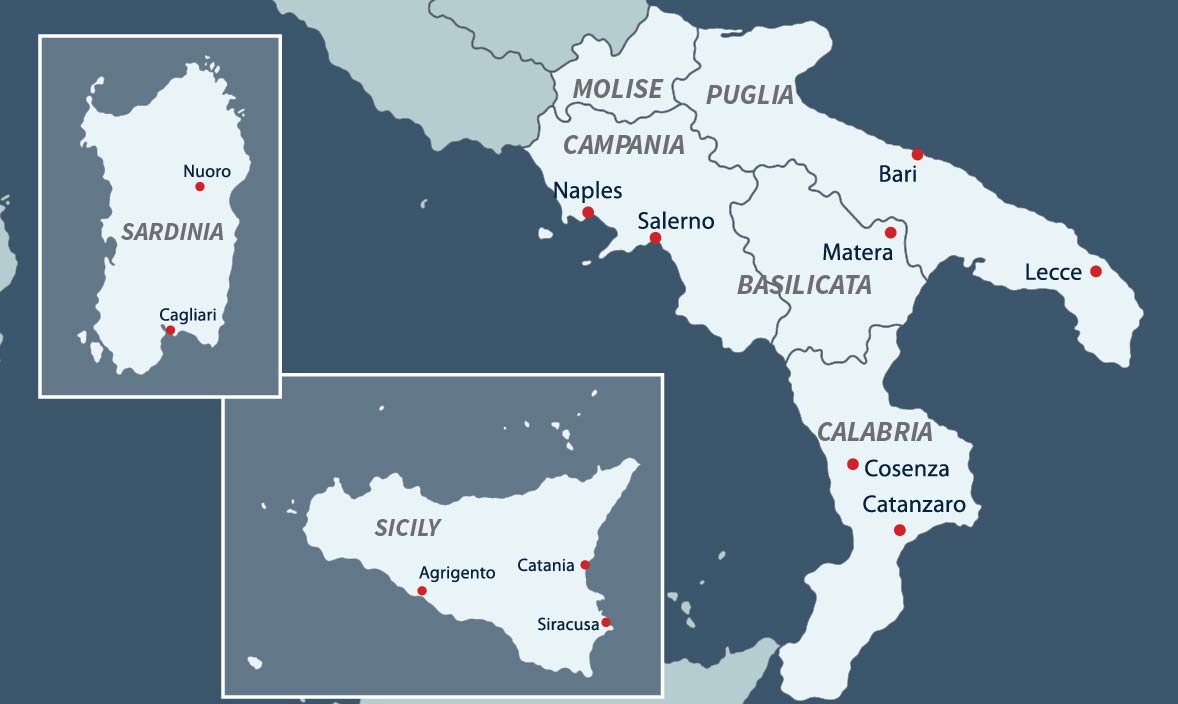
Southern Italy, for all of its famous sites dating to antiquity, drew the geographic “short end of the stick.” Mount Vesuvius dominates Italy’s southwestern coastline, giving way to continuing mountains and hills with limited arable land. Cities and towns along the coastline take advantage of the narrow fertile plains and the year-round Mediterranean climate.
The Mediterranean’s largest island, Sicily rises from sea level to 10,890 feet above sea level at Mount Etna’s peak. Despite hilly and rugged terrain, much of Sicily is dominated by agriculture due to its fertile, volcanic soil. At its northeastern most point, the Strait of Messina separates Italy and Sicily by less than two miles.
The mountainous landscapes of Sardinia form the Mediterranean’s second-largest island. Large coastal plains give way to green valley’s interspersed with granite mountain ranges. The shores and cliffs are dominated by salty marshes and much of the countryside is uncultivated grasslands. The subtropical island tops off at 6,017 feet at Mount La Marmora and is drained by two short but prominent rivers — the Tirso and Flumendosa.
Weather in Southern Italy
Sardinia, Sicily and southern Italy are the warmest, driest parts of the country. Sardinia experiences a mild winter compared to the rest of the region and minimal rainfall year-round. Although Mount Etna receives snow each winter, Sicily has comfortable winters with temperatures rarely falling below 45°F at night. Summers are particularly warm with higher humidity along the coasts controlled by cool Mediterranean breezes.
Italian Food & Wine

Italy’s cuisine greatly varies from region to region — iconic Italian meals are after a combination of flavors from both northern and southern Italy. Fans of parmesan cheese and preserved meats like salami and prosciutto can thank northern Italian cuisine along with its thicker, butter-rich dishes such as fettuccine alfredo. Olive oil and garlic enthusiasts owe a debt of gratitude to southern Italy, where pizza, mozzarella cheese and eggplant parmigiana originate.
Italy has brought us many of the greatest flavor combinations in the world: dough, marinara, mozzarella and we get pizza; flour, water, and eggs and we have our beloved pasta; arborio rice, wine, and stock and we get creamy risotto; milk, cream, sugar, and flavor and you get Italy’s famous frozen treat, Gelato.
Italy is made up of twenty regions that offer foods with distinct characteristics. Every town has a different way of making the same dish and every village has its own food specialty. Local cooking preferences are shaped by geographic, historical, and climatic differences.
Food is as an undeniable aspect of Italy’s culture and for good reason — Italian cuisine transcends the plate and forms a vital aspect of the Italian identity. Following a core belief that food is best enjoyed at its freshest, a smorgasbord of flavors awaits with every bite. This passion creates an unbelievable ambiance and has helped Italian cuisine take on a life and legendary reputation of its own. While local cuisine can vary greatly from region to region, Italian cuisine as we know it today is a contribution of flavors from northern and southern Italy.
Many of Italy’s culinary traditions can be traced to the days of Greek colonies and the Roman Empire. Attributed to the Roman epicurean Marcus Gavius Apicius living in the first century C.E., De Re Coquinaria (“The Art of Cooking”) contains hundreds of recipes compiled near the turn of the fifth century. Under the control of the Roman Empire and the following centuries as independent city states, Italian cuisine retained its core ingredients — pasta, tomatoes and cheese — while lending its own delicate influences. Regional differences are easy to spot in Milan’s risotto, pizza in Naples and spaghetti throughout Southern Italy. However, the true treasure of Italian cooking comes from the abundance of fresh and local flavors. Succulent fruits and vegetables combined with herbs and spices enhance the flavor and texture of a balanced meal.
While pasta and fresh produce are found throughout the country, Italy’s geography has shaped the ingredients used. Coastal regions reaped the rewards of the Mediterranean, incorporating fish and seafood into the daily diet. Southern Italy’s warm Mediterranean climate is ideal for vast olive groves and bold produce such as tomatoes, capers, garlic and mozzarella cheese. Instead of preparing meals with olive oil produced to the south, Northern Italy often cooks with butter, potatoes, pork, beef and parmesan cheese.
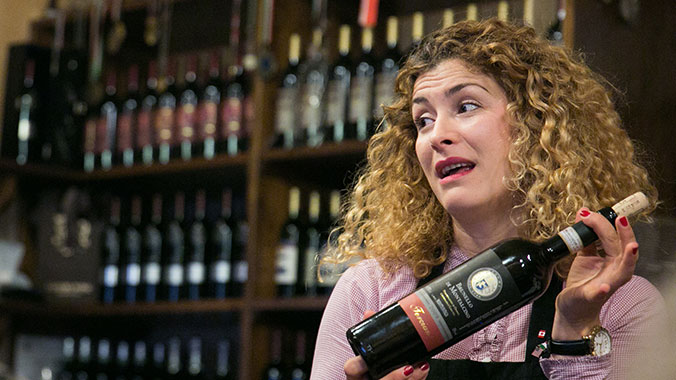
One of the oldest wine producing areas of the world, Italy is home to 20 distinct wine-growing regions and more than 800 grape varieties. Tuscany — Italy’s premier wine destination — is picture-perfect with rolling vineyards set among walled villages and medieval castles.
The Sangiovese grape is renowned for producing Chianti, a classic wine paired with tomato-heavy dishes including pizza and pasta. Italy’s northeastern regions surrounding Venice and Trento are best known for their production of Prosecco. Exclusively produced in three of Italy’s wine-growing regions, the refreshing beverage embodies the classic saying, la dolce vita.
When navigating the crowded field of Italian wines, they can be typically be broken into two categories: table wine and higher end DOC wine (Denominazione di origine dontrollata). Table wine meets the simplest criteria, having been produced within Italy and is best enjoyed over a meal and in an easy atmosphere. The DOC can be broken down into three categories, with increasingly strict regulations including vineyard yield, type of grape and alcohol limits.
A Brief Timeline of Italian History
Once the capital of the world’s most powerful empires and today the center of the largest religion in the world, Italy’s influence on the world cannot be understated. Though Italy as we know it today was not unified until 1871, the legacy exerted by the small peninsula has impacted Western Civilization as a whole.
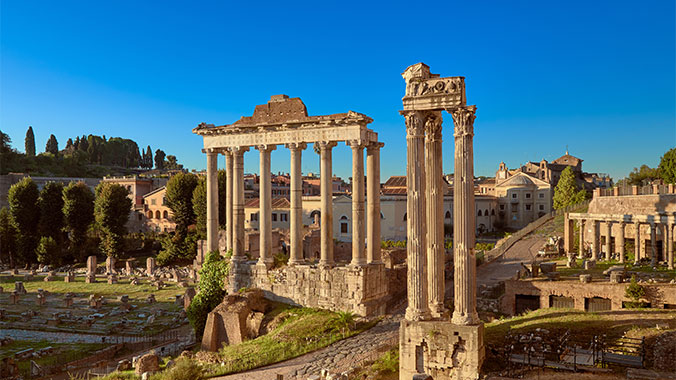
The Apennine Peninsula was first inhabited by local tribes spread throughout the mountains and plains, as Greeks and Phoenicians settled along the coastal areas of southern Italy, Sicily and Sardinia. In 753 BCE, a small farming village was founded along the River Tiber. Named for the Etruscan king Romulus — the first of seven quasi-mythical Etruscan kings — the city of Rome slowly grew in power and ultimately expelled its tyrants when the Roman Republic was founded in the third century BCE. The Republic’s dominance in the Mediterranean was cemented after claiming victory over the North African city-state of Carthage in the Punic Wars (246-164 BCE). Julius Caesar forever changed the direction of Ancient Rome as he consolidated power and led the shift from a republic to an empire. Centuries of economic and military expansion stretched Roman influence over the coming centuries from the north of England to the Persian Gulf. The Eternal City’s culture spread throughout the empire to influence civilizations from antiquity to modern day; this influence is credited with establishing Christianity as the region’s dominant religion. The Church of Rome was established at the end of the first century, though the Bishop of Rome remained a symbolic position until Constantine’s rule beginning in 306 CE.
Rome’s walls were breached for the first time in 410 CE by the Visigoths as the center of power shifted east for the first time in almost a millennium — the last time a unified peninsula would exist until the 1800s. The land designated to the Holy See would become the only constant as tribes from the north contested over the once-powerful land. Pope Adrian I enlisted the help of the Frankish King Charlemagne in 800 CE to protect their territory from the Lombard’s, creating the Holy Roman Empire. Along the coasts, mercantile empires grew from Italy’s prime location in the heart of the Mediterranean. Maritime kingdoms — the best known of which are Venice, Pisa and Amalfi — prospered through trade and military conflicts while shifting the Italian map through the centuries.
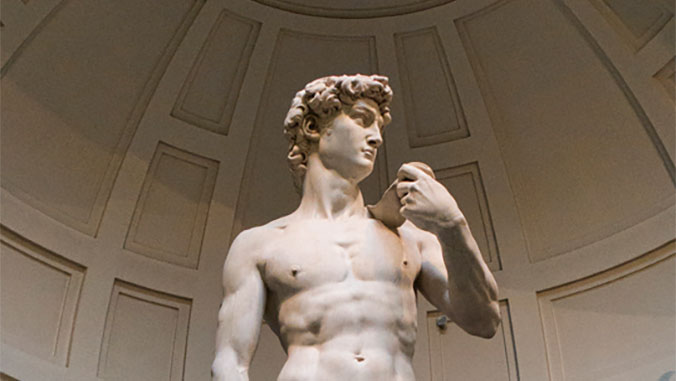
Commune-centered city-states continued to grow and expand, incubating their own social, political and artistic developments beginning in the 11th century. The cities of Florence, Venice, Genoa and Rome became the center of cultural diffusion as Europe emerged from the medieval period to a time of classical ideals. Powerful benefactors, including the Pope and the Medici family, spurred the Renaissance and financed the Masters who had taken on a legendary reputation — Leonardo da Vinci, Michelangelo, Raphael, Donatello, Dante and Machiavelli. An artistic rivalry between Italy’s small states helped the Renaissance take on a life of its own and spread through the European continent.
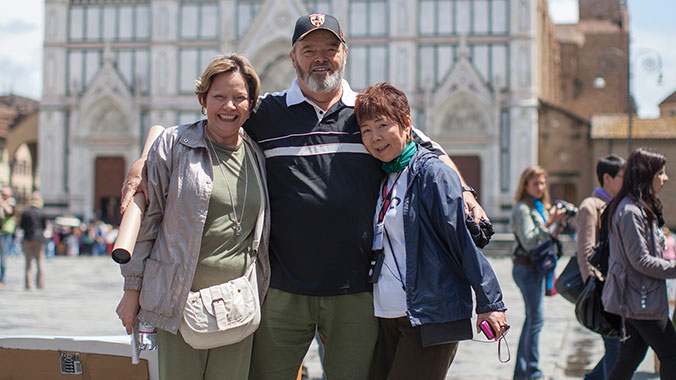
The late-18th century saw Europe’s imperial conflicts overthrow the Italian status quo — competing independent states caught in continuous conflict with limited outside influence — as Napoleon surged south through the Alps in 1796. Within a year, the Italian peninsula had been subdued and divided into two Republics governed by Enlightenment ideals.The Congress of Vienna following Napoleon’s imminent defeat returned Italy to a patchwork of local governments but left a new movement for a unified country in its place. Under the military leadership of Giuseppe Garibaldi, the process of Risorgimento (“the Resurgence”) brought once-independent regions into a single state. Italy would finally achieve a unified identity as the Kingdom of Italy when Italian troops marched into Rome and declared it the capital in 1871. The Kingdom of Italy survived into the mid-20th century, but was unable to outlast the fascist rule of Benito Mussolini and his alliance with Nazi Germany in World War II. The threat of a civil war forced Italy’s king to declare a political referendum in 1947 in which 54% of the votes were cast in favor of becoming a republic — the government that exists to this day.
“Road Scholar is the best value for travel in terms of instructional preparation, planning for essential trip details, exceptional sites to see with advanced viewing, great people to meet and wonderful experiences for the regions! I can only describe it as stupendous, enjoyable, heavenly and so much fun.”
— Vicki from Beaverton, Ore. —
